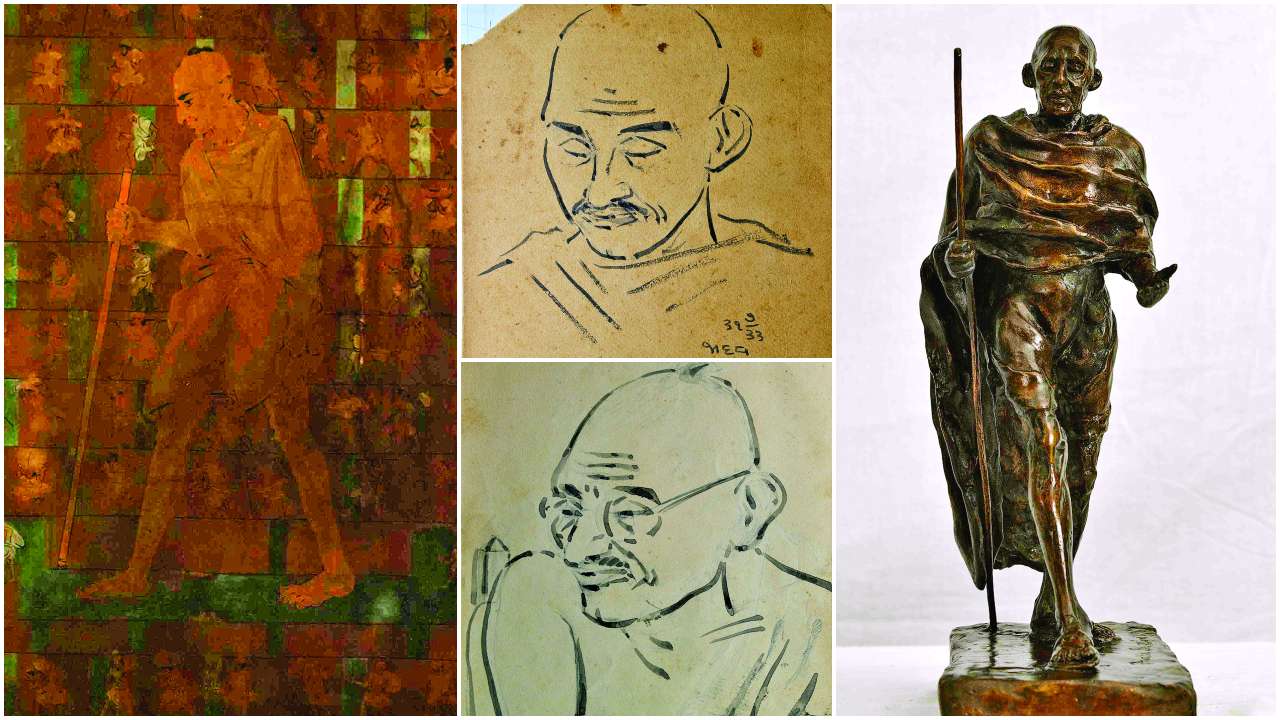
Rizwan Kadri was browsing through the wares at Gujari Bazaar, a weekly flea market on the banks of the Sabarmati in Ahmedabad, some years ago when he came across a drawing book. The historian, who teaches in a city college, was then researching an Ahmedabad Police project to memorialise Vasant Rao and Rajab Ali, who had been lynched in 1946 trying to get their Hindu and Muslim communities, respectively, to shun communal violence. The sketchbook had images of Gandhiji – Vasant-Rajab had been followers of the Mahatma – and Kadri decided to buy it.
It was a significant discovery, he realised, as he looked through the images and collated them with information from newspapers reports and other published material of the period. For this was a live pictorial record, 70 images in all, of Gandhiji's Dandi March – the iconic 242-mile trek the Mahatma undertook in 1930 that galvanised the freedom struggle. No one knew such a record existed, though there are photographs, written accounts and even audio-visual clips aplenty.
In the sketchbook, were scenes from Karadi and Navsari camps, where Gandhiji had rested on the road to Dandi, besides profile sketches of Gandhiji in various poses, and even brief pen or pencil studies of some marchers like Sarojini Naidu, Mridula Sarabhai, and Dhirajlal Dahyabhai. One even has Gandhiji's autograph on it.
These sketches are now on view at the National Gallery of Modern Art in Delhi, as part of a show of called 'Dandi March', which celebrates 150 years of Gandhiji's birth. The is the first time they've been showed, though they were printed in a large format book authored by Kadri released on Gandhi Jayanti last year. The sketches are historically important, but the artist's skill is evident even though the paper, no larger than a note-pad, has turned yellow with age.
There's something even more amazing about the sketches – the artist, Chaganlal Jadhav, says Kadri, was probably India's first Dalit modern artist. Jadhav's connection with Gandhi, says Kadri, began when he began attending the Antyaj Ratri Shala (night school for scheduled castes) that he had started in Kochrab village near his Sabarmati ashram, trudging many kilometres to get there. Later, it was at Gandhi's initiative that Jadhav began to learn painting under Kanu Desai and then the well-known artist Ravishankar Raval, who made arrangements for Jadhav to study at art schools in Lucknow and Indore, where he was taught by eminent modernist painter NS Bendre.
The sketchbook, Kadri found, had other riches. Gandhiji was arrested soon after the Dandi March and so was Jadhav. Both were sent to Nagpur prison, where Jadhav served a shorter, three month, sentence. This yielded another crop of paintings of the prison inmates, the daily life, the buildings, etc. The pictorial record continues longer, into 1938, with images of stalwarts of the nationalist struggle such as C Rajagopalachari, Jawaharlal Nehru, Khan Abdul Ghaffar Khan, Sardar Patel, Subhash Chandra Bose and so on.
But how did the sketchbook come to be so carelessly discarded, especially as Jadhav, in later life, came to be quite well known in art circles in Gujarat with many students like Amit Ambalal who are successful artists today? The artist had no family, says Kadri, and after his death in 1987, his home was illegally occupied by a family who discarded his belongings, among them the sketchbook. Thankfully, they found a safe refuge in Kadri and will be seen by posterity.